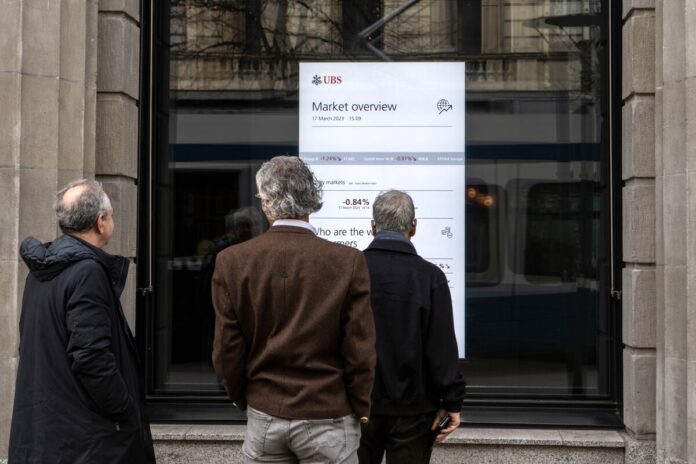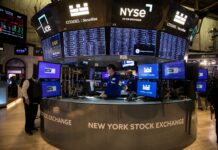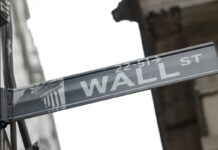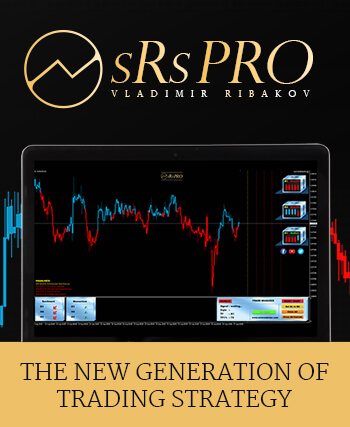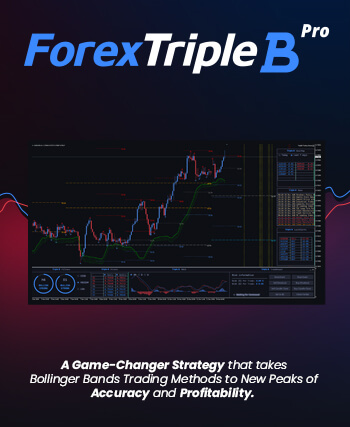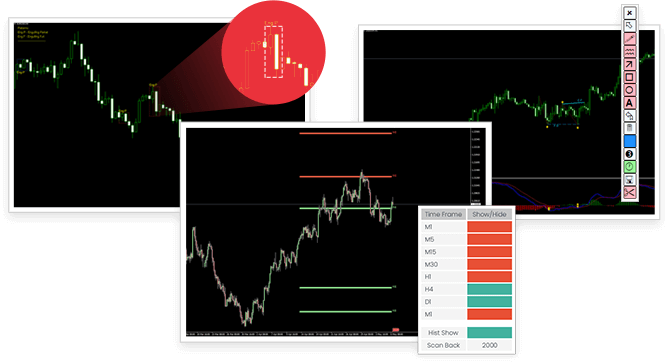
Stocks climbed as regulators worldwide rushed to shore up market confidence over the weekend, with the recent financial turmoil spurring speculation on a slower pace of tightening from major central banks.
An earlier bid for the safest corners of the market subsided as the S&P 500 rose and Treasuries fell with the dollar. UBS Group AG climbed as investors digested the drawbacks and potential upside of its Credit Suisse Group AG takeover. Big lenders like JPMorgan Chase & Co. and Wells Fargo & Co. rebounded. First Republic Bank plunged after S&P Global Inc. cut its credit rating again, missing out on a rally by its regional bank peers led by New York Community Bancorp.
Just a couple of weeks ago, investors were betting the Federal Reserve would raise rates close to 6% and the European Central Bank would hike past 4%. Now markets imply the tightening cycles are almost over and wager on at least four rate cuts in the US by year-end. Overnight indexed swaps price in a 60% chance of a quarter-point hike by the Fed this week — a move that was seen as given before the banking crisis sparked.
“We expect a 25 bp hike and higher dots in the dot plot,” said Chris Low, chief economist at FHN Financial. “50 bp would be reckless, but no hike would suggest the bank crisis supplants the fight against inflation. 25 bp seems just right, given the circumstances. Of course, our view from midtown Manhattan may not be quite the same as the Fed’s from central DC, as they have eyes on banking system internals we can’t see from here. If the Fed chooses not to hike, the language they use to couch that choice in will be key to shaping the entire yield curve.”
Market easing expectations have “run wild” because the media blackout has restrained Fedspeak, according to Win Thin at Brown Brothers Harriman. While nobody knows the extent to which market turmoil is impacting the rate hike debate, Fed officials will likely fall in line with ECB President Christine Lagarde, who last week stressed that there is no trade-off between price and financial stability.
“This was a very strong statement that suggests any banking sector issues won’t derail the tightening cycle,” he noted. “We think this view is held by pretty much every central bank, including the Fed, which supports our call for a 25 bp hike this week.
‘Vicious’
Morgan Stanley’s Michael Wilson said the stress in the banking system marks what’s likely to be the beginning of a painful and “vicious” end to the bear market in US stocks.
“With the back-stopping of bank deposits by the Fed/FDIC, many equity investors are asking if this is another form of QE and therefore ‘risk on’,” the strategist wrote “We argue it’s not, and instead represents the beginning of the end of the bear market as falling credit availability squeezes growth out of the economy.”
A banking crisis in a matter of days has emerged to potentially choke off a hot economy, raising the odds of a recession that the Fed has been working to avoid. As Fed Chair Jerome Powell and his colleagues gather Tuesday for a two-day policy meeting, the question is whether the brakes have been suddenly slammed too hard. The central bank wanted a slowdown — something seen as essential to tame inflation — but not a crisis capable of sinking the economy into a deep recession.
“As a result, a 25 basis point hike is the most likely outcome from the FOMC meeting next week,” said Seema Shah at Principal Asset Management. “If market turmoil deepens over coming days, even a pause is possible. “Ultimately, financial conditions will tighten further — either via additional central bank tightening as they try to tame inflation or via a deterioration in the current banking crisis.”
In the likely volatile period ahead, high-quality, defensive assets should be sought out, while diversification will be increasingly important, Shah added.
To Keith Lerner at Truist Wealth, says he also prefer staying defensively positioned even as the market appears to be fairly resilient.
“Although a Fed pause or pivot could trigger a short-term rally, we don’t see this as a cure-all, especially if the economy falls into recession later this year,” Lerner added. “The Fed’s reaction function to current events will likely be less aggressive in providing monetary support relative to past periods given the conundrum of still-elevated inflation.”
$8.6 Trillion
The banking-sector turmoil combined with a previous increase in funding pressures has left financial markets keenly attuned to what the Fed will say about its $8.6 trillion balance sheet.
Until this month that had been shrinking as part of the Fed’s efforts to return it back to pre-pandemic levels. But now it has started to expand again as the Fed acts to bolster the banking system through a slate of emergency lending programs. Its latest step came Sunday, when it moved with other central banks to boost US dollar liquidity. Some say financial-stability concern may spur policymakers to dial back the runoff of its bond portfolio, a process known as quantitative tightening that’s designed to drain reserves from the system.
The failure of three lenders at home and a spiraling banking crisis in Europe have bent the US stock market, but didn’t break it — so far. Beneath the surface, the firms with the shakiest finances are trailing their sturdiest peers by a magnitude seen few times before.
Dividing the Russell 1000 Index into four baskets based on the level of debt load compared with market capitalization shows how wide the gap has become. The basket of firms with the highest credit burden fell 3% last week, trailing a basket with the healthiest finances by 4.8 percentage points. Since 2008, the gap was higher in just two instances – the climax of the pandemic rout in March 2020 and the week Lehman Brothers went under in September 2008.
Turmoil in the banking sector, hotter-than expected inflation data, and renewed hopes for a dovish Federal Reserve has Bitcoin reaching levels not seen in about nine months. The largest digital coin topped $28,000 for the first time since June. Bitcoin is now up more than 70% since the start of the year. Other tokens have rallied as well, with Ether gaining almost 50% since Dec. 31 and Solana, one of last year’s most beaten-down coins, more than doubling.
Key events this week:
- US existing home sales, Tuesday
- US Treasury Secretary Janet Yellen to appear at Senate subcommittee hearing, Wednesday
- FOMC rate decision, news conference from Chair Jerome Powell, Wednesday
- EIA crude oil inventory report, Wednesday
- Eurozone consumer confidence, Thursday
- BOE interest rate decision, Thursday
- Swiss National Bank rate decision and press conference, Thursday
- US new home sales, initial jobless claims, Thursday
- US Treasury Secretary Janet Yellen testifies to a House Appropriations subcommittee, Thursday
- Eurozone S&P Global Eurozone Manufacturing PMI, S&P Global Eurozone Services PMI, Friday
- US durable goods, Friday
Some of the main moves in markets:
Stocks
- The S&P 500 rose 0.4% as of 9:58 a.m. New York time
- The Nasdaq 100 fell 0.6%
- The Dow Jones Industrial Average rose 1%
- The Stoxx Europe 600 rose 0.9%
- The MSCI World index rose 0.3%
Currencies
- The Bloomberg Dollar Spot Index fell 0.4%
- The euro rose 0.5% to $1.0724
- The British pound rose 0.7% to $1.2261
- The Japanese yen rose 0.2% to 131.64 per dollar
Cryptocurrencies
- Bitcoin fell 0.2% to $27,913.67
- Ether fell 1.9% to $1,764.92
Bonds
- The yield on 10-year Treasuries advanced four basis points to 3.46%
- Germany’s 10-year yield advanced two basis points to 2.13%
- Britain’s 10-year yield advanced two basis points to 3.30%
Commodities
- West Texas Intermediate crude fell 1.4% to $65.81 a barrel
- Gold futures rose 0.5% to $2,000.90 an ounce

